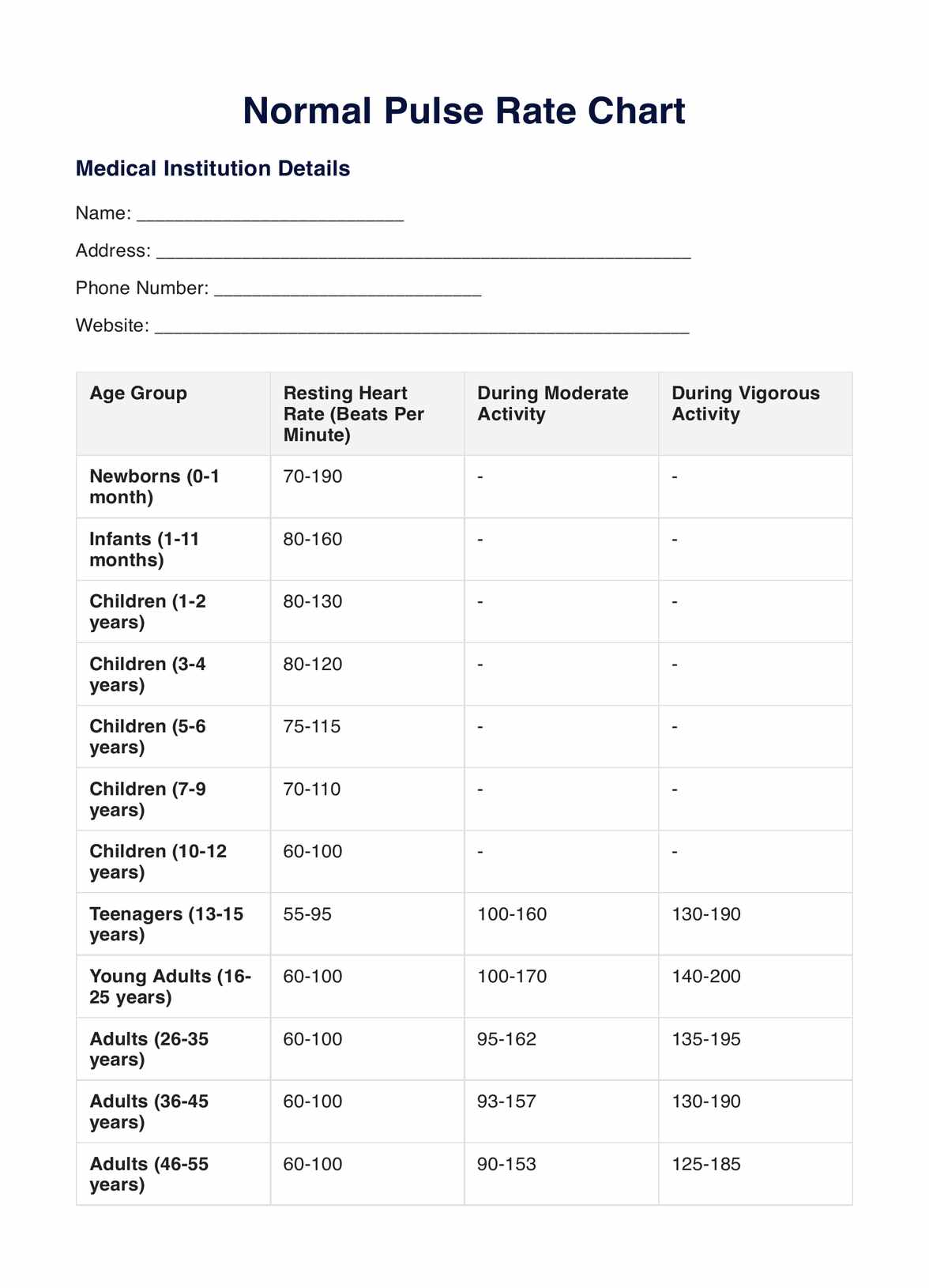Healthcare providers, athletes, fitness trainers, and individuals monitoring their heart health.

Normal Pulse Rate
Explore our Normal Pulse Rate Chart to monitor your heart health effectively, suitable for all ages and fitness levels.
Use Template
Normal Pulse Rate Template
Commonly asked questions
People use Normal Pulse Rate Charts during health check-ups, fitness assessments, and regular health monitoring.
By comparing an individual's measured pulse rate to the ranges given on the chart.
EHR and practice management software
Get started for free
*No credit card required
Free
$0/usd
Unlimited clients
Telehealth
1GB of storage
Client portal text
Automated billing and online payments











